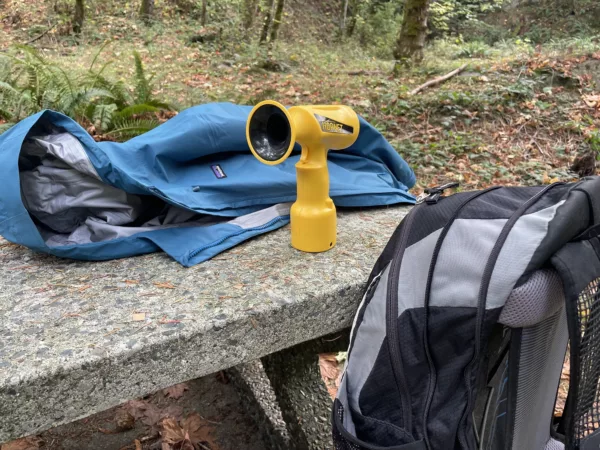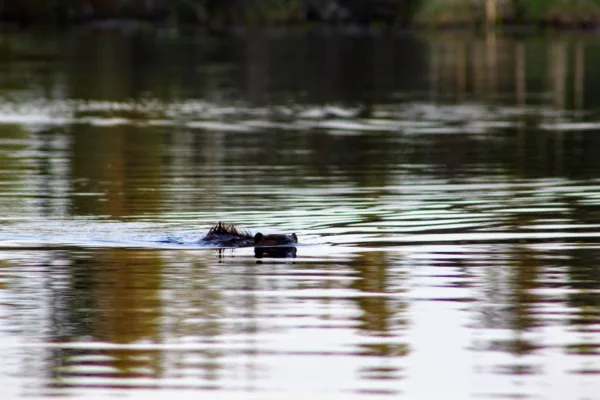A Simple Piece of Gear You Need for Winter (But Don’t Already Have)
The path alongside the Little East River in Arrowhead Provincial Park was a skating rink. In uncharacteristic fashion for central Ontario, winter had thus far brought very little snow. But it was still frigid, with temperatures well below zero—so what little white stuff had accumulated within this Muskoka park’s boundaries was basically blue ice by late-January.
It was a snowshoe trail, but snowshoes were superfluous. A couple inches of ice meant that I could stride along the trail in running shoes—if it weren’t for one little problem. I’d be on my butt in about two seconds flat. Worse—I would end up slipping right into the Little East River—see below to get the picture. And as the trail neared the powerful sluice of Stubb’s Falls, slipping became significantly more deadly

Sidenote—why is falling on ice so painful? I’d rather tumble onto gritty asphalt than land butt-first on ice. I swear, frozen water is harder than diamonds.
On that day last winter, however, I had a trick up my sleeve—or more specifically, stashed in my backpack. A trick that would make negotiating this slip-and-slide as easy as strolling on a sidewalk in summer. This trick? Simple—some new footwear.
It may be a little early to chat about cold-weather gear—but given the recent snowfalls throughout Northern BC and Alberta, it’s not at all ominous to say that winter is coming. And as summer moves through autumn, and our alpine trails start freezing up and getting dusted in white, hikers should start swapping out their warm-weather kits for gear more appropriate to the variable conditions.
We all know about the 10 Essentials—but over the past couple of years, I’ve added an 11th to my late-fall, winter and early-spring sojourns: trail crampons.

Trail crampons are pared-down versions of the metallic beasts alpinists use to climb great glaciers and ascend into the Death Zone. But their purpose is the same—ultra-enhanced grip on surfaces that provide very little.
In general, trail crampons are designed to fit over trail runners, hiking boots and snow boots. They’ll have stretchy and pliable uppers to aid in a snug fit, and the best ones have metal links and sharp metal teeth on the bottom to grind into the toughest ice and withstand transitions on and off stone and dirt. Crampons like these ones; the units I used that day in Arrowhead.
On iced-out trails like the Stubb’s Falls Loop last winter, trail crampons were an obvious fit. They worked just as well on the Bonnie’s Pond Trail in Silent Lake Provincial Park a few days later—even though it wasn’t nearly as icy (pictured below and at top). However, having these grippy metal teeth atop my boots allowed me to check out epic viewpoints and dance around the lakeshore with impunity. Snowshoes would have been a burden. Fact is, unless the snow is deep and fresh, you often won’t need snowshoes to traverse the winter wilds. If snowpack is down to a few inches, go fast and light with a simple pair of trail crampons over your boots.

My love for trail crampons actually goes back a few years—all the way a visit to Maligne Canyon in Jasper National Park. This au naturel ice palace in the Northern Rockies is a wonder to explore—but without metal teeth on your feet, you’ll be relegated to the doorstep. With trail crampons, your Instagram feed will be fire (as the kids say). If there was ever a testing ground for trail crampons, Maligne is it.
Beyond ice and snow, trail crampons prove their worth in a variety of conditions. I know friends who have used them to scale greasy clay slopes, when even the five-millimetre lugs on their Vibram soles become as useless as pennyloafers. Or, they’re great to pack along for alpine rambles where leftover snow is likely—but certainly not worth packing snowshoes. After all, good trail crampons weigh less than 400 grams for the pair. That’s about as much as a full waterbottle, and may save you a slippery tumble down a slushy slope.
And bonus, when not in use—just hang them off your backpack and they’ll jingle like a bear bell. Trail crampons… is there anything they can’t do?
Related Articles:
Gear We Love: Five Outdoorsy Items You Haven’t Seen Yet
Return of the One-Piece: Why You Need Helly Hansen’s Ullr Powder Suit in Your Life Today
Essential Gear for the Canadian Winter















